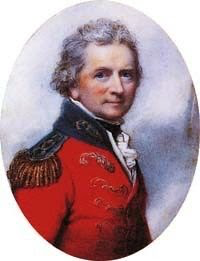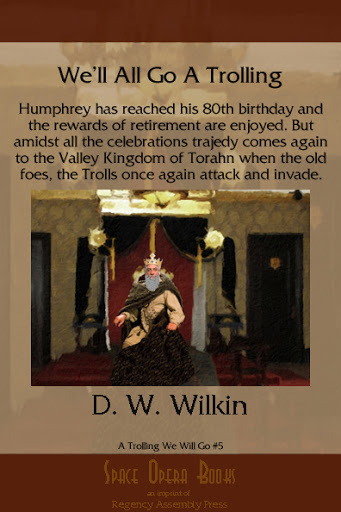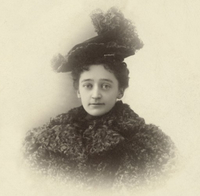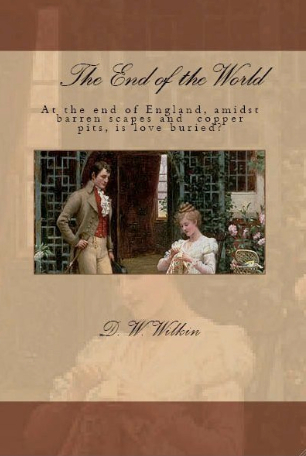D.W. Wilkin's Blog, page 2
January 15, 2017
RAP (Regency Assembly Press) in need of Beta-Readers
Regency Assembly
Press
is looking for
Beta Readers
One novel is ready for Beta Reading
We have a continuation of Pride and Prejudice with Ms Caroline Bingley and her fortune at stake:
Do we think that Mr Hurst married his Bingley Bride without incentive? It is highly probable that Caroline Bingley, even though she has a sharp, acerbic tongue, still is in possession of a fortune and an astute fortune hunter who deciphers this may soon be on the road to, if not a happy marriage, one with financial security.
Please respond or send an email if you are interested


RAP’s has Beggars Can’t Be Choosier
One of the our most recent Regency Romances.
Beggars has won the prestigious Romance Reviews Magazine Award for Outstanding Historical Romance:
It has also been nominated for the 2015 RONE Awards in the category of Historical:Post Medieval sponsored by InD’Tale Magazine.

It is available for sale and I hope that you will take the opportunity to order your copy.
For yourself or as a gift. It is now available in a variety of formats. For $3.99 you can get this Regency Romance for your eReader. A little more as an actual physical book.
When a fortune purchases a title, love shall never flourish, for a heart that is bought, can never be won.
The Earl of Aftlake has struggled since coming into his inheritance. Terrible decisions by his father has left him with an income of only 100 pounds a year. For a Peer, living on such a sum is near impossible. Into his life comes the charming and beautiful Katherine Chandler. She has a fortune her father made in the India trade.
Together, a title and a fortune can be a thing that can achieve great things for all of England. Together the two can start a family and restore the Aftlake fortunes. Together they form an alliance.
But a partnership of this nature is not one of love. And terms of the partnership will allow both to one day seek a love that they both deserve for all that they do. But will Brian Forbes Pangentier find the loves he desires or the love he deserves?
And Katherine, now Countess Aftlake, will she learn to appreciate the difference between happiness and wealth? Can love and the admiration of the TON combine or are the two mutually exclusive?
Purchase here:Amazon Kindle, Barnes and Noble Nook, Kobo, Smashwords, iBooks, & Trade Paperback
Feedback
If you have any commentary, thoughts, ideas about the book (especially if you buy it, read it and like it 
January 14, 2017
Regency Personalities Series-Charles Pierrepont 1st Earl Manvers
Regency Personalities Series
In my attempts to provide us with the details of the Regency (I include those who were born before 1811 and who died after 1795), today I continue with one of the many period notables.
Charles (Medows) Pierrepont 1st Earl Manvers
4 November 1737 – 17 June 1816

Charles Medows
Charles Pierrepont 1st Earl Manvers was the great great grandson of Daniel Meadows (d.1659) whose son was Sir Philip Meadows (d.1718), the successful parliamentarian. In 1710, Sir Philip’s fellow parliamentarian, Sir John Guise, 3rd Bart., was “informed by Queen Anne that Sir Philip had been promised the position as Envoy to Hanover, the role Guise had invisaged for himself. Sir Philip Meadows was knighted in 1658, made Knight Marshal of the King’s Palace and sent as an Ambassador to Sweden and Denmark.
In 1717, Sir Philip’s son – also named Sir Philip Meadows (d.1757) – was one of the twelve members of the Board of General Officers, working with Sir Robert Walpole, the First Commissioner (Lord) of the Treasury. Earlier, on 2 July 1700 he was appointed, as his father had been, knight-marshal of the King’s Household, and was formally knighted by King William on 23 December 1700 at Hampton Court. Sir Philip’s daughter, Mary (d.1743), was a Maid of honour to Queen Caroline and his first cousin was Philip Meadows (d.1752), who had been Mayor of Norwich in 1734. On the 29th of May of that year, Prime Minister Sir Robert Walpole presented Mayor Meadows with his personal gift: the city’s new silver mace which bore Walpole’s own coat-of-arms. Like Prime Minister Walpole, Mayor Meadows had accumulated vast wealth owing to their success with the South Sea Company.
Another of Sir Philip’s sons, Sir Sidney Meadows, was also knight-marshal of the Kings Palace. Sidney died in Andover in 1792. Like his brother Philip, Sidney was Deputy Ranger of Richmond Park and worked under Prime Minister John Stuart, 3rd Earl of Bute who, by 1761, had been appointed Ranger by George III. At this time – shortly after he ascended the throne in 1760 – the King was sold the Rangership by his daughter Princess Amelia. King George, having appointed the third Lord Bute as Ranger, continued to keep up an interest in the park and instigated many repairs and improvements with Sir Sidney (and at times his brother Philip) as deputy. When Lord Bute died in 1792 the King took the Rangership back into his own keeping and for a short time areas were given over to farming. Sir Sydney died in 1792, aged 91, having worked alongside the King, managing the park’s agricultural and grazing branches.
Sarah Meadows Martineau was the daughter of Norwich Mayor Philip Meadows. Sarah was baptized at St George’s Church, Colegate, Norwich, Norfolk on 24 February 1725 and died in Norwich on 26 November 1800. Sarah was the subject of published poems by her friend, political writer Anna Letitia Barbauld, who had been “admired” by Horace Walpole, son of Prime Minister Walpole. Sarah Meadows Martineau is recorded as the matriarch of the Meadows of Norwich; “endowed with a strong mind and a well-cultivated understanding….her loss will be severely felt by a numerous family and by many whom her charity daily relieved and also by those who resorted to her judgement for advice”.
Educated at Oxford, Medows became a midshipman in the Royal Navy and was promoted to lieutenant on 7 August 1755. He became a commander on 5 April 1757 in Renown, a 20-gun sloop, but on 17 August the same year was promoted to post-captain in the frigate Shannon, and was ordered to join the Mediterranean Fleet. He commanded her until April 1761, when Vice-Admiral Saunders appointed him to the 50-gun frigate Isis, replacing Captain Edward Wheeler, who had been killed during the capture of the French ship Oriflamme. Medows continued on Isis, in the Mediterranean, until the end of the war in 1763, and in 1769 retired altogether from the Navy.
In 1773, Medows’s uncle, Evelyn Pierrepont, 2nd Duke of Kingston-upon-Hull, died and left his estates at Thoresby and elsewhere to his wife Elizabeth, Duchess of Kingston, the former wife of the Earl of Bristol. The duke’s nephews challenged the will on the grounds of bigamy, and the proceedings which followed established that the marriage of the Duchess had indeed been bigamous. However, this was found not to affect her inheritance, so she was able to retain the Pierrepont estates until her death, which took place in August 1788. Upon inheriting the estates, Medows adopted the surname of Pierrepont.
A watercolour sketch entitled In Captain Pierrepont’s Grounds was made by the Preston-born artist Anthony Devis (1729–1817).
His family’s political dynasty ensured that Medows was a well connected, if not terribly effective parliamentarian. As a Whig, Medows had been on good terms with Horace Walpole, the son of Prime Minister Sir Robert Walpole. Horace had voiced his concern about the impending death of Medows’ uncle, the 2nd Duke of Kingston. With the patronage of the prime minister’s protégé, Thomas Pelham Holles, 1st Duke of Newcastle, Medows was returned as one of the Members of Parliament for Nottinghamshire in December 1778. He continued to sit in the Commons as a knight of the shire until he was ennobled in 1796.
In Parliament, Medows (Pierrepont) supported the Duke of Portland, whose influence helped him to be raised to the peerage as Baron Pierrepont, of Holme Pierrepont in the County of Nottingham, and Viscount Newark, of Newark on Trent in the County of Nottingham, on 23 July 1796, and on 1 April 1806 he was promoted to an earldom as Earl Manvers. In the Lords, Manvers supported agricultural reform and was vice-president of the Board of Agriculture in 1803. He died in 1816 and was buried at Holme Pierrepont.
He married Anne Orton, daughter of William Mills of Richmond, in 1774. They had five children:
Hon. Evelyn Henry Frederick Pierrepont (1775–1801).
Charles Herbert Pierrepont, 2nd Earl Manvers (1778–1860).
Hon. Henry Manvers Pierrepont (1780–1858).
Hon. Philip Sydney Pierrepont (13 June 1786 – 15 February 1864), of Evenley Hall, Northamptonshire, married on 19 August 1810 Georgiana Browne, died without issue.
Lady Frances Augusta Pierrepont (d. 1847), married on 20 October 1802 Admiral William Bentinck (1746–1813), married on 30 July 1821 Henry William Stephens.


Conclusion of the Trolling Series-We’ll All Go A Trolling
We’ll All Go A Trolling Not only do I write Regency and Romance, but I also have delved into Fantasy.
The Trolling series is the story of a man, Humphrey. We meet him as he has left youth and become a man with a man’s responsibilities.
We follow him in a series of stories that encompass the stages of life. We see him when he starts his family, when he has older sons and the father son dynamic is tested.
We see him when his children begin to marry and have children, and at the end of his life when those he has loved, and those who were his friends proceed him over the threshold into death.
All this while he serves a kingdom troubled by monsters. Troubles that he and his friends will learn to deal with and rectify. It is now available in a variety of formats.
For $2.99 you can get this fantasy adventure.

Barnes and Noble for your Nook
King Humphrey, retired, has his 80th birthday approaching. An event that he is not looking forward to.
A milestone, of course, but he has found traveling to Torc, the capital of the Valley Kingdom of Torahn, a trial. He enjoys his life in the country, far enough from the center of power where his son Daniel now is King and rules.
Peaceful days sitting on the porch. Reading, writing, passing the time with his guardsmen, his wife, and the visits of his grandson who has moved into a manor very near.
Why go to Torc where he was to be honored, but would certainly have a fight with his son, the current king. The two were just never going to see eye to eye, and Humphrey, at the age of 80, was no longer so concerned with all that happened to others.
He was waiting for his audience with the Gods where all his friends had preceded him. It would be his time soon enough.
Yet, the kingdom wanted him to attend the celebrations, and there were to be many. So many feasts and fireworks he could not keep track, but the most important came at the end, when word was brought that the Trolls were attacking once more.
Now Humphrey would sit as regent for his son, who went off to fight the ancient enemy. Humphrey had ruled the kingdom before, so it should not have been overwhelming, but at eighty, even the little things could prove troublesome.
Feedback
If you have any commentary, thoughts, ideas about the book (especially if you buy it, read it and like it 
January 13, 2017
Regency Personalities Series-Jockey Club
Regency Personalities Series
In my attempts to provide us with the details of the Regency (I include those who were born before 1811 and who died after 1795), today I continue with one of the many period notables.
Jockey Club
1750 – 2006
Jockey Club was founded as one of the most exclusive high society social clubs in the United Kingdom, sharing some of the functions of a gentleman’s club such as high-level socialising. It was called ‘The Jockey Club’ in reference to the late medieval word for ‘horsemen’, prounced ‘yachey’ and spelt ‘Eachaidhe’ in Gaelic. The club’s first meetings were held at the Star & Garter Pub at Pall Mall, London before later moving to Newmarket; a town known in the United Kingdom as “The Home of Racing”.
In the late 19th and early 20th centuries, The Jockey Club had a clubhouse in Pall Mall, where many other gentlemen’s clubs were based. The fact that it acquired a governing role in the sport reflected the dominant role of the aristocracy in British horse racing up to the 20th century.


RAP has The End of the World
The End of the World This is the first of the Regency Romances I published. It is available for sale and I hope that you will take the opportunity to order your copy.
For yourself or as a gift. It is now available in a variety of formats. And now at the reduced price of $3.99 you can get this Regency Romance for your eReader. A little more as an actual physical book.
Barnes and Noble for your Nook
Amazon for your Kindle and as a Trade Paperback
Hermione Merwyn leads a pleasant, quiet life with her father, in the farthest corner of England. All is as it should be, though change is sure to come. For she and her sister have reached the age of marriage, but that can be no great adventure when life at home has already been so bountiful.
When Samuel Lynchhammer arrives in Cornwall, having journeyed the width of the country, he is down to his last few quid and needs to find work for his keep. Spurned by the most successful mine owner in the county, Gavin Tadcaster, Samuel finds work for Gavin’s adversary, Sir Lawrence Merwyn.
Can working for Sir Lawrence, the father of two young women on the cusp of their first season to far away London, be what Samuel needs to help him resolve the reasons for his running away from his obligations in the east of the country?
Will the daughters be able to find happiness in the desolate landscapes and deadly mines of their home? When a stranger arrives in Cornwall while the war rages on the Peninsula, is he the answer to one’s prayers, or a nightmare wearing the disguise of a gentleman?
Feedback
If you have any commentary, thoughts, ideas about the book (especially if you buy it, read it and like it 
January 12, 2017
Regency Personalities Series-Harriet Grote
Regency Personalities Series
In my attempts to provide us with the details of the Regency (I include those who were born before 1811 and who died after 1795), today I continue with one of the many period notables.
Harriet Grote
1 July 1792 – 29 December 1878

Harriet Grote
Harriet Grote was born Harriet Lewin at The Ridgeway, near Southampton. Her father, Thomas Lewin, after spending some years in the Madras civil service, came back in the same ship with the divorced Madame Grand (from Pondicherry) who afterwards married Talleyrand, and remained with her for a time at Paris in the years preceding the French Revolution. Settling then in England, and marrying a Miss Hale (daughter of General Hale and a Miss Chaloner, descended from Thomas Chaloner the regicide), who brought him a large family, he lived in style, keeping a house in town as well as in the country.
Harriet Lewin grew up a high-spirited, brilliant girl, and at the age of twenty-two, her father then residing at The Hollies, near Bexley in Kent, attracted the devotion of George Grote, her junior by two years, who lived with his parents not far off. They were married in 1820. She began to cultivate foreigners, especially French public men. During Grote’s parliamentary period she supported to him by holding together the party of radical reformers socially; and later supported his scholarly work.
Their circumstances became easier in 1830; from 1832 till 1837 they lived mainly at Dulwich Wood, then, for greater convenience of parliamentary attendance, at 3 Eccleston Street, which they did not give up till 1848 for the well-known 12 Savile Row, associated with the literary fame and administrative activity of all Grote’s later years. From 1838 they also established a country house at East Burnham (near Burnham Beeches) in Buckinghamshire, and this they maintained till 1850. It was replaced by a small place, which they built in the neighbourhood and occupied, under the name of ‘History Hut,’ from the beginning of 1853 till the end of 1857. Then, for reasons detailed by Mrs. Grote in an Account of the Hamlet of East Burnham (privately circulated at the time), they decided to leave the area.
They took from 1859 the spacious Barrow Green House in Surrey, which once had been occupied by Jeremy Bentham; but it was inconvenient for visits to London, and was given up in 1863. In 1864 they settled finally at Shiere, Surrey, in ‘The Ridgeway’ as it was called by Mrs. Grote, after the place of her birth. Herself an accomplished musician, she cultivated friendly relations with Mendelssohn and other composers and performers, including Jenny Lind.
Though her health suffered from a fever following on premature delivery in 1821 of an only child (a boy), who lived just a week, she had an excellent constitution. Her nephew was the actor William Terriss, the father of Ellaline Terriss. She remained active to the last. She died at Shiere on 29 December 1878, in her eighty-seventh year, and was buried there.
Her first acknowledged work was a Memoir of the Life of Ary Scheffer, the painter, a graphic sketch that reached a second edition in 1860, the year of its publication. Two years later she issued a volume of Collected Papers (some unpublished). A keeper of diaries and notebooks, as well as a sprightly letter-writer, she began to write a biographical account of her husband while he was still alive. The work was rapidly pushed forward on his death in 1871, though she had already reached her eightieth year, and was published in 1873 as The Personal Life of George Grote.
She had previously (in 1866) printed for private circulation a sketch entitled The Philosophical Radicals of 1832, including a Life of Sir William Molesworth. She also wrote a pamphlet (1878), A brief Retrospect of the Political Events of 1831-1832, as illustrated by the Greville and Althorp Memoirs.


You Ought to Trust Your Mother (YOTTYM) now released
Now available the next Regency Romance tale by D.W. Wilkin:
Beauty has been said to be in the eye of the Beholder, or is it the Beholden.
The tale of Baron Fallion Lancelot Stafford, a gentleman of perhaps too much leisure who has served in the wars of some few years before. He now has decided that all this leisure is perhaps a waste and he should be doing something. He was just very unsure what that was.
We also find Lady Beatrice Cavendish, the daughter of the Earl of Hoare who is famed for her beauty, yet cannot find any man who has more to speak to her beyond that one subject. And yet far too many think they should offer for her with only the ardent praise to her looks to recommend them. Perhaps there exists one suitor who could speak on a subject beyond that?
In the rush of the Season of 1821, where their most intimate friends have all come to the conclusion that they should marry, can Beatrice put aside her willful ways and hear sound thoughts that her mama has said on that particular subject? Beatrice was sure that her mother would be content if she accepted the Baron Tweedglen, or any of a dozen other men of good breeding, position, or wealth. Whether they had ought to speak on her attractiveness, and no other words would leave their mouths.
Certainly a marriage with such foundations was doomed to crumble once age advanced and liver spots or wrinkles appeared. Yet amongst the Ton, such marriages were often deemed successes. Would they be so for Beatrice, though? That was something she was destined to apply her own thoughts to.
For Baron Tweedglen, the haunting memory of the war caused him to avoid any reference to his time spent prosecuting that undertaking. Such deamons as consumed his psyche, were magnified as his desire was for a world that art flourished and certainly his experience had been the exact opposite of such an inclination. The Baron was desperately in need of something that could save him from his own self. Was there a remedy in marriage as the entire Ton seemed to believe?
Now available on Amazon for $15.99…
also available for your Kindle and Kindle Reading Apps for $3.99
for those who have iPads, Nooks, or other devices, the book is also available at:
The Apple iBookstore, Barnes and Noble Nook store, Kobo, and Smashwords for $3.99 as well.


January 11, 2017
Regency Personalities Series-Charles Paulet 13th Marquess of Winchester
Regency Personalities Series
In my attempts to provide us with the details of the Regency (I include those who were born before 1811 and who died after 1795), today I continue with one of the many period notables.
Charles Ingoldsby Burroughs-Paulet 13th Marquess of Winchester
27 January 1764 – 29 November 1843
Charles Ingoldsby Burroughs-Paulet 13th Marquess of Winchester was the eldest son of the 12th Marquess of Winchester and was educated at Eton and Clare College, Cambridge. After graduating, he served with the 1st Regiment of Foot Guards as an ensign from 1784–86, then sat in the Commons as Member of Parliament (MP) for Truro from 1792–96. He returned to the military in 1796 as a Lt.-Col. in the North Hampshire Militia and became Lord Lieutenant of Hampshire in 1798. He also married Anne Andrews (daughter of John Andrews of Shotley Hall, near Shotley Bridge) on 31 July 1800 and they had seven children:
John Paulet, 14th Marquess of Winchester (1801–1887)
Lord Charles Paulet (1802–1870), a religious minister, married Caroline Ramsden firstly; remarried to Joan Granville
Lord George Paulet (1803–1879), an admiral, married Georgina Wood
Lord William Paulet (1804–1893), a field marshal, died unmarried
Lord Frederick Paulet (1810–1871), a soldier and equerry to the Duchess of Cambridge, died unmarried
Lady Annabella (d. 1855), married Rear-Admiral William Ramsden
Lady Cecilia (d. 1890), married Sir Charles des Voeux, 2nd Baronet
In 1812, Lord Winchester became Groom of the Stole to George III and continued as such under George IV and up until the death of William IV in 1837. When Queen Victoria came to the throne that year, the office was abolished. He was thus the last Groom of the Stole to the Sovereign — Prince Albert continued to have a Groom of the Stole, as did the Prince of Wales until the complete abolition of the office in 1901. On 8 August 1839, he added the name of Burroughs to his own, when he inherited the property of Dame Sarah Salusbury (née Burroughs), under the terms of her will. Lord Winchester died in 1843 and his titles passed to his eldest son, John.


Space Opera Books Presents Trolling, Trolling, Trolling Fly Hides
Trolling, Trolling, Trolling Fly Hides!
Not only do I write Regency and Romance, but I also have delved into Fantasy.
The Trolling series, (the first three are in print) is the story of a man, Humphrey. We meet him as he has left youth and become a man with a man’s responsibilities.
We follow him in a series of stories that encompass the stages of life. We see him when he starts his family, when he has older sons and the father son dynamic is tested.
We see him when his children begin to marry and have children, and at the end of his life when those he has loved, and those who were his friends proceed him over the threshold into death. All this while he serves a kingdom troubled by monsters.
Troubles that he and his friends will learn to deal with and rectify.
It is now available in a variety of formats. For $2.99 you can get this fantasy adventure.

Barnes and Noble for your Nook
Old age is catching up to Humphrey and his friends. He feels it in his bones and with his son and heir having reached the prime of his life, it could very well be time to pass the baton of rule to Daniel.With the Valley Kingdom of Torahn at Peace, that would not be a terrible thing to do. Though breaking his decision to his wife Gwendolyn, the Queen, might be the hardest battle that he ever would fight.
Even as the life of retirement looks to be attractive and possible, however, the Valley Kingdom is beset again. Not Goblins, Trolls, Giants or Men, this time. No. That Humphrey knew would be far too easy.
Those obstacles had been overcome before and the problems they presented had solutions that the army of Torahn was trained to deal with. No, of all the creatures that came forth from Teantellen that they had beaten, the one they had never faced now came forth. Dragons!
Who in the realm knew how to fight these mythical beasts? Was there even away to do so?
Now Humphrey who had thought to spend the remainder of his days quietly writing his memoirs and drinking, was faced with the greatest challenge he had ever known.
Feedback
If you have any commentary, thoughts, ideas about the book (especially if you buy it, read it and like it 








